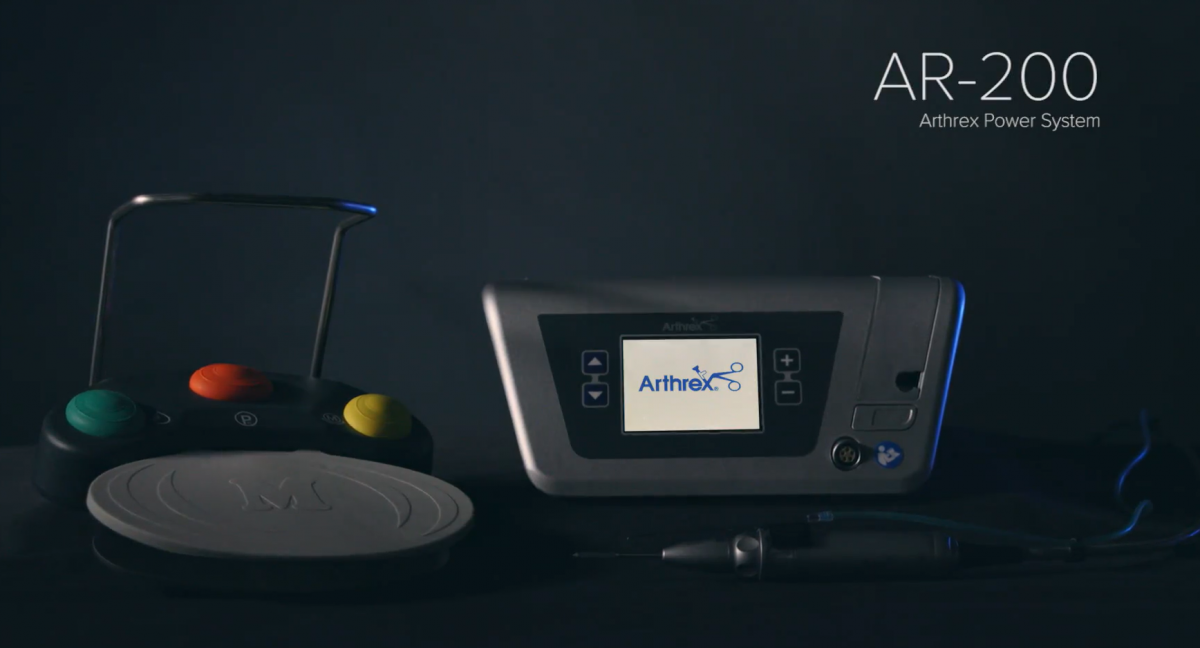Unique foot surgery has been performed in Gijos Klinikos, during which the anatomy of the foot has been successfully restored by a microscopic incision. For the first time, an exceptional procedure was carried out in Lithuania using advanced minimally invasive equipment, which allows doctors to carry out corrective reconstructive actions quickly and accurately, and facilitates healing and rehabilitation processes for patients.
The first surgery has been performed successfully
Orthopaedic traumatologist Gintautas Pocius, who carried out the foot reconstruction procedure with the new minimally invasive Arthrex equipment, says that the surgery has passed very smoothly and is thankful to the medical personnel and the specialists of the Bonameda company representing this equipment in the Baltic States, for the help of taking the full advantage of the equipment.
“We performed surgery for a 60-year-old patient who suffered foot pain due to degenerative changes. After responsibly assessing this case, we chose one of the most innovative treatments available on the market. The procedure lasted only 20 minutes, and only one minimal incision was needed to solve the patient’s problem as much as possible,” the doctor says.
“This surgery is the first step in opening up even more opportunities for us and our patients to help people with foot deformities more effectively. We hope that these surgeries will soon replace most of the standard foot deformity correction surgeries, and we will continue to provide our patients with the highest level of treatment,” Doctor Pocius says.
Minimal intervention ensures faster rehabilitation
Until now, for treating deformities of the foot and in order to perform the surgery properly, a wide‑open incision was usually made. Such surgery is more traumatic for the patient, and after surgery, it is necessary to wait for the wound to heal. In addition, increased intervention leads to an increased risk of infections and inflammation, as well as a longer rehabilitation period.
Modern minimally invasive treatment for patients solves all these issues. During such a procedure, incisions of 3–4 millimeters are made, allowing the surgeon to perform surgical manipulations. The entire surgery is controlled by modern internal view equipment.
The best news is that in the case of minimally invasive surgery, the rehabilitation period is faster and more successful, “although healing and rehabilitation vary greatly in each case and depend on the individual situation of each patient, after 4–6 months, the patient should no longer feel pain or discomfort and return to the daily rhythm of active life,” says orthopaedic traumatologist Pocius.
Microscopic incision brings unlimited possibilities

One of the first in the Baltic States to acquire the latest minimally invasive equipment in the health care institution’s representatives state that the goal is to offer patients the possibility of high-quality treatment. At the same time, we are trying to keep up with Western countries, where similar state-of-the-art medical solutions for orthopaedic and traumatology have been applied for several years.
For this reason, orthopaedic traumatologists working in Gijos Klinikos chose equipment developed by American manufacturer Arthrex for professional treatment of foot deformities. The main distinctiveness of the equipment is that minimally invasive surgical procedures can be performed using powered instruments specially designed for this procedure.
Advanced equipment expands foot deformity treatment possibilities
The new treatment method is ideal for treating medium-degree deformity of a bunion (hallux valgus), a hammertoe, as well as enlargements of the bony section of the heel, and other foot deformities.
According to the orthopaedic traumatologist Gintautas Pocius, the most advanced deformities will continue to be subject to standard open surgeries. In case of moderate foot deformities, patients should not hesitate and contact our specialists who will assess whether this procedure is the most appropriate and best solution.




















